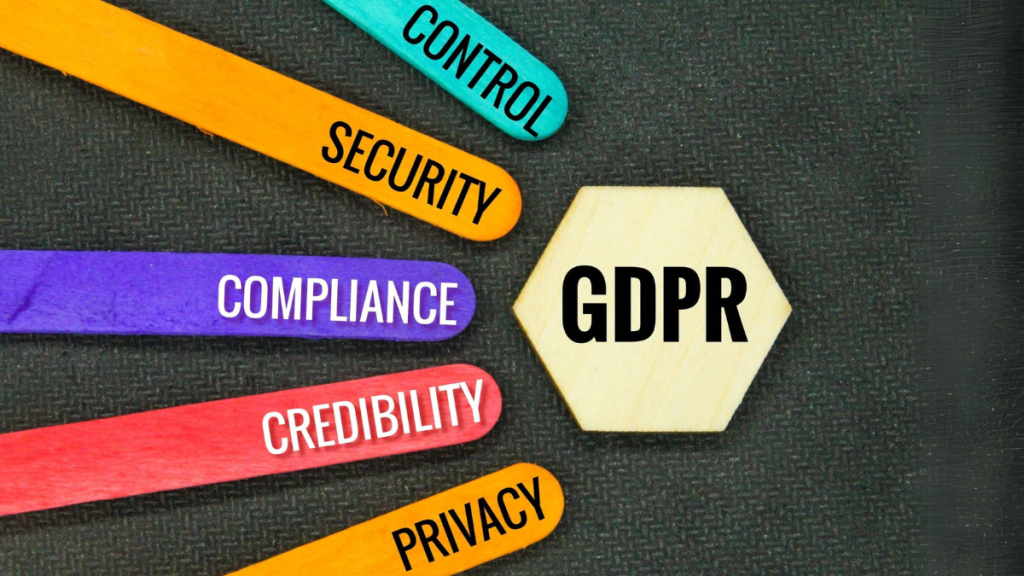In today’s digital landscape, data is at the heart of every marketing campaign. Marketers collect and analyze vast amounts of personal information to better target audiences, personalize experiences, and measure performance. However, with the introduction of the European Union’s General Data Protection Regulation (GDPR) in 2018, businesses around the world, including those based in the United States, face new responsibilities in how they collect, manage, and protect personal data.
Although GDPR is an EU regulation, its reach is global. Any company processing the personal data of EU residents, even if based outside Europe, is obligated to comply. This has significant implications for U.S. digital marketers who often engage with international audiences. Understanding and navigating GDPR is not only essential for legal compliance but also critical for building trust with customers and maintaining a strong digital reputation.
Understanding GDPR and Its Impact on Marketing
At its core, GDPR aims to give individuals more control over their personal data and ensure organizations handle that data with transparency and security. It defines personal data broadly, encompassing anything from names and email addresses to IP addresses and behavioral data collected through cookies.
For marketers, this means that everyday activities like collecting email addresses for newsletters, tracking website behavior with analytics tools, or retargeting ads based on browsing history all fall under GDPR’s scope if EU residents are involved.
One of the fundamental principles of GDPR is that any data processing must have a lawful basis. Consent is the most commonly cited basis, requiring marketers to obtain explicit, informed permission before collecting or using personal data. Consent must be freely given, specific to the purpose, and easily withdrawn. Other lawful bases, like legitimate interests, may also apply, but marketers need to carefully assess and document their rationale to stay compliant.
Transparency: The Cornerstone of Compliance
Transparency is not just a buzzword in GDPR, it’s a legal requirement. Marketers must clearly inform users about what data is collected, why it’s collected, how it will be used, who it might be shared with, and how long it will be retained. This information should be communicated through privacy notices or policies that are easy to find and understand. Avoiding complex legal jargon helps ensure users actually comprehend how their data is handled, which supports trust-building and reduces the risk of complaints.
Building Consent Management into Your Marketing Practices
Managing consent effectively is a key challenge for digital marketers under GDPR. Consent mechanisms should be straightforward, ensuring users actively opt in rather than being passively included. For example, cookie banners must allow users to accept or decline tracking without penalty. Additionally, consent records must be maintained, showing when and how users gave their permission. Offering users simple options to update or withdraw consent at any time also aligns with GDPR’s user-centric approach.
Practical Steps to Achieve Compliance
Starting a GDPR compliance journey can feel overwhelming, but breaking it down into manageable steps helps. First, conduct a thorough audit of the personal data your organization collects and processes. Identify what types of data are gathered, for what purposes, under which legal bases, and where the data is stored. This “data map” is crucial for understanding your exposure and ensuring you’re prepared to meet data subject rights.
Next, update your privacy policies to reflect GDPR requirements accurately. These should be comprehensive yet accessible, detailing data processing activities and informing users of their rights. Speaking of rights, GDPR grants individuals several, including access to their data, the right to rectify inaccuracies, the right to erasure (“right to be forgotten”), and the right to object to certain types of processing. Establish clear procedures for responding promptly and efficiently to such requests.
Don’t overlook the role of third-party vendors in your compliance efforts. Many marketing tools, email platforms, analytics services, and ad networks process personal data on your behalf. Ensuring these partners are GDPR-compliant and have data processing agreements in place is essential to mitigate risk.
Why GDPR Compliance Benefits Your Business
While GDPR compliance may initially seem like a burden, it offers tangible benefits. Firstly, demonstrating a commitment to data protection builds trust with your customers, who are increasingly concerned about privacy in an age of frequent data breaches. Trust fosters stronger relationships, higher engagement, and brand loyalty.
Secondly, being compliant sets your business apart in a crowded marketplace. As privacy awareness grows, companies that respect and protect user data enjoy a competitive advantage. Lastly, adherence to GDPR reduces the risk of costly fines and reputational damage, protecting your bottom line over the long term.
Embracing Compliance as Part of Your Marketing Strategy
Rather than viewing GDPR as a regulatory hurdle, consider it an opportunity to refine your marketing practices. Transparency and respect for user data encourage higher-quality interactions and can even improve the effectiveness of campaigns. When users feel confident that their information is handled responsibly, they’re more likely to engage positively with your brand.
Navigating GDPR doesn’t mean sacrificing creativity or innovation in marketing. It means aligning your strategies with evolving legal standards and consumer expectations. Marketers who successfully integrate GDPR compliance into their workflows position themselves for sustainable success in an increasingly privacy-conscious world.
Compliance as a Competitive Advantage
Achieving GDPR compliance in digital marketing is an ongoing journey that requires dedication and adaptability. By understanding the regulation’s principles, enhancing transparency, managing consent responsibly, and respecting user rights, marketers can confidently engage global audiences while protecting their brand reputation.
The transition from clicks to compliance is not merely a regulatory obligation, it’s a crucial step toward building a trustworthy and resilient digital marketing strategy.

